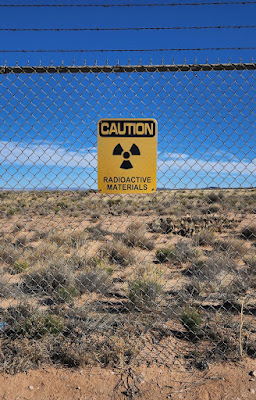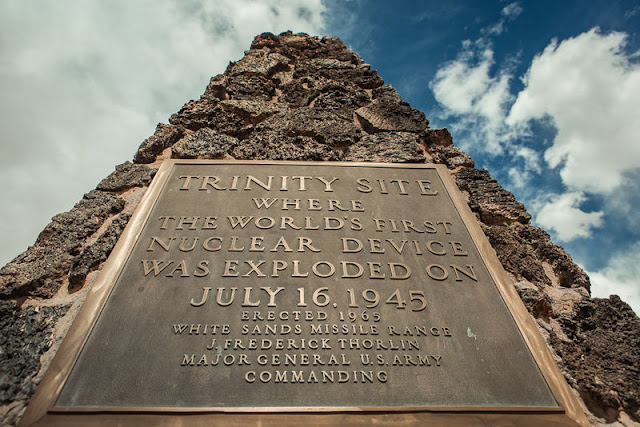On This Date In History
The first-ever detonation of a nuclear weapon, code-named “Trinity,” took place at 5:29 a.m. on July 16th, 1945. Giving birth to the atomic age, this was a culmination of efforts by the scientists of the Manhattan Project.
It was conducted by the United States Army as part of the Manhattan Project. The test was conducted in the Jornada del Muerto desert about 35 miles southeast of Socorro, New Mexico, on what was then the USAAF Alamogordo Bombing and Gunnery Range, now part of White Sands Missile Range.
The only structures originally in the vicinity were the McDonald Ranch House and its ancillary buildings, which scientists used as a laboratory for testing bomb components. A base camp was constructed, and there were 425 people present on the weekend of the test.
The scientists and a few dignitaries had removed themselves 10,000 yards away to observe as the first mushroom cloud of searing light stretched 40,000 feet into the air and generated the destructive power of 15,000 to 20,000 tons of TNT. The tower on which the bomb sat when detonated was vaporized.
The question now became, on whom was the bomb to be dropped? Germany was the original target, but the Germans had already surrendered. The only belligerent remaining was Japan.
The code name "Trinity" was assigned by J. Robert Oppenheimer, the director of the Los Alamos Laboratory, inspired by the poetry of John Donne. The test was of an implosion-design plutonium device, informally nicknamed "The Gadget", of the same design as the Fat Man bomb later detonated over Nagasaki, Japan, on August 9, 1945.
The complexity of the design required a major effort from the Los Alamos Laboratory, and concerns about whether it would work led to a decision to conduct the first nuclear test.
The bomb design to be used at Trinity Site actually involved two explosions. First there would be a conventional explosion involving the TNT and then, a fraction of a second later, the nuclear explosion, if a chain reaction was maintained. The scientists were sure the TNT would explode, but were initially unsure of the plutonium. If the chain reaction failed to occur, the TNT would blow the very rare and dangerous plutonium all over the countryside.
Because of this possibility, Jumbo was designed and built. Originally it was 25 feet long, 10 feet in diameter and weighed 214 tons. Scientists were planning to put the bomb in this huge steel jug because it could contain the TNT explosion if the chain reaction failed to materialize. This would prevent the plutonium from being lost. If the explosion occurred as planned, Jumbo would be vaporized.
Jumbo was brought to Pope, N.M., by rail and unloaded. A specially built trailer with 64 wheels was used to move Jumbo the 25 miles to Trinity Site.
As confidence in the plutonium bomb design grew it was decided not to use Jumbo. Instead, it was placed in a steel tower about 800 yards from ground zero. The blast destroyed the tower, but Jumbo survived intact.
Today Jumbo rests at the entrance to ground zero so all can see it. The ends are missing because, in 1946, the Army detonated eight 500 pound bombs inside it. Because Jumbo was standing on end, the bombs were stacked in the bottom and the asymmetry of the explosion blew the ends off.
https://www.atomicarchive.com/history/trinity/landmark.html
The Trinity site is open to the public twice a year. Usually on the first Saturdays of April and October. The monument is made of lava rock and sits a few feet from the foundation of one of the four legs of the tower that housed the bomb.

















No comments:
Post a Comment